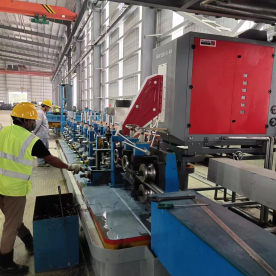In the ever-evolving landscape of manufacturing and production, the utilization of innovative technology is critical for enhancing efficiency and product quality. One of the most significant advancements in this field is the application of high-frequency welders for plastic. This technology has revolutionized how manufacturers approach the joining of plastic components, making processes faster, more efficient, and providing superior bond strength. This article delves into the mechanisms, applications, and benefits of high-frequency welding for plastics, highlighting its transformative role in various industries.
High-frequency welding, also known as radio frequency (RF) sealing, utilizes electromagnetic energy to generate heat within the plastic material. This process is particularly beneficial for high-frequency welders designed for plastic, as they can effectively bond thermoplastic materials without the need for additional adhesives or mechanical fasteners. The method works by placing the plastic sheets between two electrodes. Once the machine activates, it emits radio waves, excited the molecules in the plastic, causing them to vibrate and generate heat. The heat softens the surfaces of the plastic, allowing them to fuse together when pressed. This technique is not only effective but also ideal for creating hermetic seals, making it a preferred choice in industries that require airtight or watertight seals.
The applications of high-frequency welding for plastic are extensive and cover a wide range of industries. In the medical sector, for instance, high-frequency welders are crucial for manufacturing various medical devices and packaging materials. The ability to create sterile, airtight seals is vital for ensuring the safety and integrity of medical products. From producing IV bags to creating durable, clean packaging for pharmaceutical products, high-frequency welding plays an indispensable role in healthcare applications.
Furthermore, the automotive industry has incorporated high-frequency welding to effectively bond components such as dashboards, automotive upholstery, and other plastic fittings. The lightweight and durable nature of the welded plastic parts leads to improved fuel efficiency and enhanced vehicle performance. This technology allows for the precision joining of parts, which is essential for meeting rigorous safety standards in automotive manufacturing.
In the consumer goods sector, high-frequency welders for plastic have enabled manufacturers to produce high-quality, aesthetically pleasing products. Items like inflatable toys, outdoor equipment, and durable carry bags are just a few examples of how this technology is utilized. The adoption of high-frequency welding allows for intricate designs and seamless finishes while maintaining the strength and longevity of the final product. As consumers increasingly look for high-quality and distinctive products, manufacturers are leveraging high-frequency welding to meet these demands.

Exploring the Advancements and Applications of High Frequency Welders for Plastic in the Industrial Sector
One of the most compelling advantages of utilizing high-frequency welders for plastic is the speed of production. Traditional welding methods may require longer curing times and additional handling, while high-frequency welding can quickly and efficiently seal plastics in mere seconds. This increased production speed translates to higher output levels and reduced labor costs, offering businesses a competitive edge in the market. Furthermore, the reduction in waste materials is a significant benefit; manufacturers can create precisely made products with less excess material left over, aligning with sustainable production practices.
Quality control is another crucial aspect of manufacturing that high-frequency welders address effectively. The consistent and controlled nature of the welding process ensures uniformity in the final product, reducing the risk of defects and failures. This reliability is particularly critical in industries where product performance is paramount, such as aviation, electronics, and medical device manufacturing. Manufacturers can trust that every seal produced through high-frequency welding will meet stringent quality standards.

Exploring the Advancements and Applications of High Frequency Welders for Plastic in the Industrial Sector
Despite its numerous benefits, the implementation of high-frequency welders for plastic does not come without challenges. The initial investment in high-frequency machines can be substantial, and operators require training to execute the process effectively. Additionally, selecting the appropriate material types for high-frequency welding is crucial, as not all plastics are compatible with this technology.

Exploring the Advancements and Applications of High Frequency Welders for Plastic in the Industrial Sector
In conclusion, the advancements in high-frequency welders for plastic have dramatically changed the manufacturing landscape across multiple sectors. By offering speed, efficiency, and superior quality, this technology has established itself as a vital tool for companies looking to innovate and excel in today’s competitive market. As industries continue to evolve, the role of high-frequency welding is expected to grow, driving further technological advancements and applications within manufacturing processes.Induction heating




